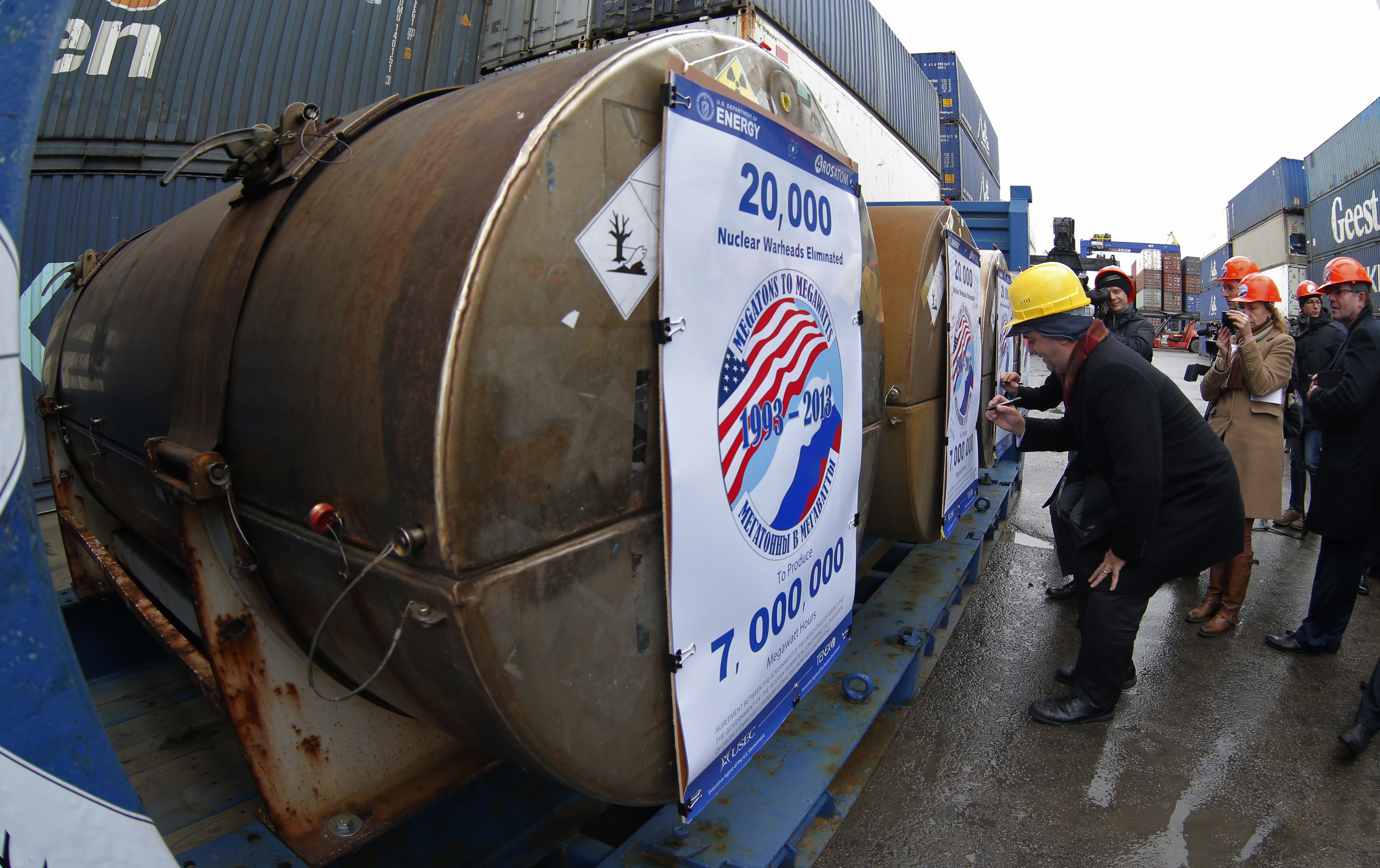Take a canister, fill it with down-blended uranium worth $2.5 million, secure it and 39 others to the deck of a container ship, send it off toward Baltimore, and you have nearly completed a deal that provided commercial uses in America for the remains of 20,000 dismantled Russian nuclear bombs.
Thursday evening, under thick, wintry clouds, the M.V. Atlantic Navigator prepared to leave the dockyards in St. Petersburg, closing out a 20-year joint U.S. and Russian program that safely defused 500 metric tons of weapons-grade uranium.
It provided jobs to nuclear technicians at a time when Russia was in chaos; it sparked the development of a dilution process that enables bombs to become fuel for power plants; and it may have helped to keep poorly secured nuclear materials out of the wrong hands — at least that's what Americans say. Russians strongly deny that.



















With your current subscription plan you can comment on stories. However, before writing your first comment, please create a display name in the Profile section of your subscriber account page.